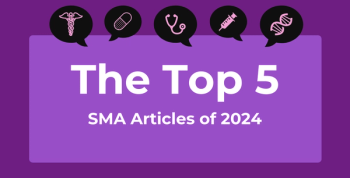
Language, Intellect, Speech Differ by Phenotype in Children With SMA Type 1
Speech impairment was primarily linked to motor impairment, according to a study examining the development trajectory of children with spinal muscular atrophy.
A recent study from Italy examined cognitive functions, language comprehension, and speech in children with different phenotypes of
The
The authors said this is the first study to analyze cognitive functions, language comprehension, and speech in patients by age and subtypes, to develop cognitive and language benchmarks. SMA1, the most severe form of this genetic disorder, impacts speech and language as there is poor muscle and motor control. Not as much is known about the cognitive and language development of these children, they wrote, even as life expectancy is increasing with improved nutritional and respiratory care, management of recurrent infections, and the use of orthopedics and postural devices.
In their practice, they said, they have been adapting existing assessments in order to “monitor cognitive function, language comprehension, and quality of speech and optimize developmental interventions.”
The study included 22 children with SMA1 (10 affected by subtype 1a-1b, which they referred to as AB and 12 by 1c, which they referred to as C) aged 3–11 years in stable condition. Eight were male and 14 were female, and they had a coded way to communicate “yes” and “no”.
Assessments retrieved from patient records included the one-dimensional Raven test (RCPM) for cognitive development (IQ); ALS Severity Score (ALSSS) for speech disturbances; Brown Bellugy modified for Italian standards (TCGB) to evaluate language comprehension; and Children’s Hospital of Philadelphia Infant Test of Neuromuscular Disorders (CHOP-INTEND) for motor functioning.
Patients with SMA 1AB had lower CHOP-INTEND scores compared with patients with SMA 1C.
There was no statistically significant difference between the AB and C groups on the RCPM cognitive test, and their median IQ was 120. There was also no difference between younger children and older children.
Global median score of the speech domain of the ALSSS was 5, but in children with the AB type the score was 2, significantly lower than the 6.5 in children with type C (P < .001). Although ALSSS did not correlate with both IQ and TCGB, it had a strong (P < .001) correlation with CHOP-INTEND.
The TCGB language test was completed by 13 children, and their morphosyntactic comprehension was in the normal range (50).
In other words, general intelligence and language comprehension were found to be in the normal range and speech impairment was linked to motor impairment, the researchers said.
“Phenotypes, rather than age, seemed to be the most discriminant factor that influences the quality of expressive language in SMA1 children,” they said.
Their results are important, they said, as they provide information that can be used when planning interventions related to communication and learning. For example, they noted, social functioning is linked with the ability to actively participate in school, and being involved in self-care requires the ability to communicate and advocate about one’s health.
Reference
Zappa G, LoMauro A, Baranello G, et al. Intellectual abilities, language comprehension, speech, and motor function in children with spinal muscular atrophy type 1. J Neurodev Disord.Published online February 2, 2021. doi:10.1186/s11689-021-09355-4
Newsletter
Stay ahead of policy, cost, and value—subscribe to AJMC for expert insights at the intersection of clinical care and health economics.





























































